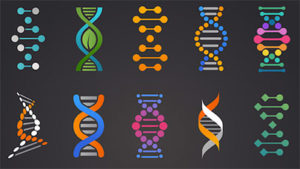
Drug Developer Wraps Anaconda Around Gene Data

(Marish/Shutterstock)
An open source data visualization framework running on the Anaconda data science platform will be used by a drug discovery company focusing on cures for rare genetic diseases.
Continuum Analytics, developer of the Bokeh framework operating on the Python-based Anaconda platform, said Wednesday (Oct. 26) that drug discovery specialist Recursion Pharmaceutical would use the platform to help identify genetic disease markers. The visualization of cell data also could be used to assess drug efficacy, speeding the introduction—and sometimes the re-introduction—of drugs to market, the partners said.
Using the Bokeh framework to combine layered visualizations can reveal the differences among healthy and diseased cells, allowing biologist to experiment with potential drugs. The cell data also can be used to gauge the effectiveness of drugs in treating genetics diseases. The hope is that these new tools also could help speed up a lengthy new drug approval process or repurpose current medications.
“By layering information and viewing images interactively, we are obtaining insights that were not previously possible and enabling our biologists to more quickly assess the efficacy of drugs,” noted Blake Borgeson, CTO and co-founder at Recursion Pharmaceuticals. Based in Salt Lake City, Utah, the startup developed a drug-screening platform designed to repurpose drugs to treat rare genetic diseases.
The Bokeh framework running on Anaconda was created by Continuum Analytics, Austin, Texas, was created to deliver interactive, browser-based visualizations of stream dating and large data sets based on the Python, R or Scala programming languages. The venture-based startup claims more than 3 million downloads of its Anaconda platform.
The Recursion data science team works with hundreds of terabytes of high-resolution images of human cells to find cures for hundreds of genetic diseases. The visualization framework is being used to unearth new contextual data that could be used by cell biologists to discover potential treatments. The repurposing strategy involves re-evaluating shelved drugs to identify potential new uses.
While identifying new treatments for genetic diseases, the approach also is intended to extend the shelf life of drugs that cost millions of dollars to develop. That approach would likely appeal to drug makers whose patents have expired for the treatment of specific diseases and other ailments.
Along with interactive visualization, the Anaconda platform also is promoted for analytics applications such as high performance Hadoop and scalable data science.
The private sector effort comes as government research agencies such as the U.S. National Institutes of Health are funding projects intended to compress genomic data so it will be easier for researchers to use. Along with the genomic big data compression study, NIH is also funding research on interoperable biomedical data repositories and “early stage development” of biomedical computing, informatics and big data science.
Recent items:
Accelerating Drug Discovery With Machine Learning on Big Medical Data
Five Ways Genomic Data Is Making Us Healthier



























